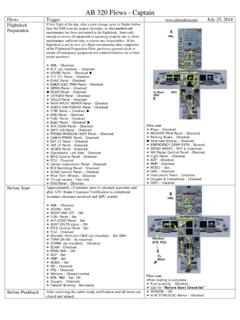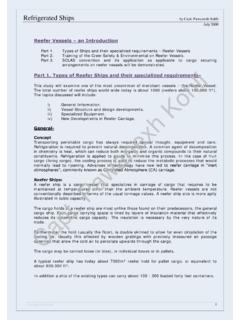Transcription of Proof of Concept - CAPT
1 Evidence Requirements Supporting Critical Decisions in Pharmacotherapeutics: Proof of Concept Vs Proof of Value RG Peterson MD, PhD, MPH. Executive Director Drug Safety and Effectiveness Network Canadian Institutes of Health Research Faculty of Medicine University of British Columbia Proof of Concept The fundamental regulatory requirement for market authorization High quality RCT new drug vs placebo RCT's limit bias and minimize random chance Extrapolation to large populations may be limited Safety information may be limited POC drives design of Phase 2 and Phase 3 RCTs High failure rate for new drugs in Phase 2. High g ppercentage g of kill decisions are strategic g Limitations of RCT's in POC. Typically 2-arm, new drug vs placebo Only a few questions can be addresses in a single RCT. RCT's powered for efficacy outcome have limited safety data RCT's powered for safety have a narrow focus Limited extrapolation to populations not specifically included in RCT for subset analysis Limitations of POC Studies Little information on long term use Little information on any but the most frequent safety f t iissues Little information on drug interactions Little information in full target population for the marketed product Little information comparing to existing drugs Little information regarding appropriate utilization Limitations of POC Requirements At the time of Market Authorization, we really do not know a lot about a new drug.
2 Evidence Required for Evidence Required for Health Technology Assessment Information on long term use Information on population safety issues and their costs t Information on drug interactions Information in full target population for the marketed product Information comparing to existing drugs Information informing appropriate utilization Cost effectiveness estimates Economic Models Based upon direct comparison Preferred, vary based upon assumption of equal efficacy ffi ((costt minimization). i i i ti ) or superior i efficacy ffi (incremental cost effectiveness ratio). Based upon indirect comparison Require stricter rules than simple meta-analysis Difficult to agree g upon p appropriate pp p assumptions p Wide variations within sensitivity analysis Low quality evidence input yields low quality estimations in cost-effectiveness ff Non inferiority Margins Basis of claim Proven equivalent by non- inferiority .. Stipulation i l i off quantum iin statistical i i l test off not much worse than.
3 Requires both statistical and clinical basis for the margin POC may be more lenient than POV. When the NI is generous , is the payer willing to give away benefit of the older drug? ( , 20%, 1 in 5). Post Hoc Data Analysis May be basis for sub-population efficacy claims Increasingly depended upon in economic models Frequently the basis for requesting payment decisions as second or third line therapy Perversion of RCT design strengths Expect p that an arrow is shot at a target, g not that an arrow is shot, then the target painted around it Data Mining in Observational Studies Open label extensions Often cited in clinical practice guidelines for efficacy as well as safety Magnifies g bias issues from unblindingg Removes concurrent assessment of best practice . Often outcome measures are relaxed,, incompletely p y reported, or inconsistently assessed. Need for objective patient level reporting Methodology Issues Appropriate surrogate outcome measures, exclusion criteria, length of trials in POC vs placebo Appropriate active comparators Trial design for non non-inferiority inferiority studies Pre-declared subpopulation analyses Open p label extensions Strengthen data requirements, build in comparisons Confidence on reliability of Observational Data






